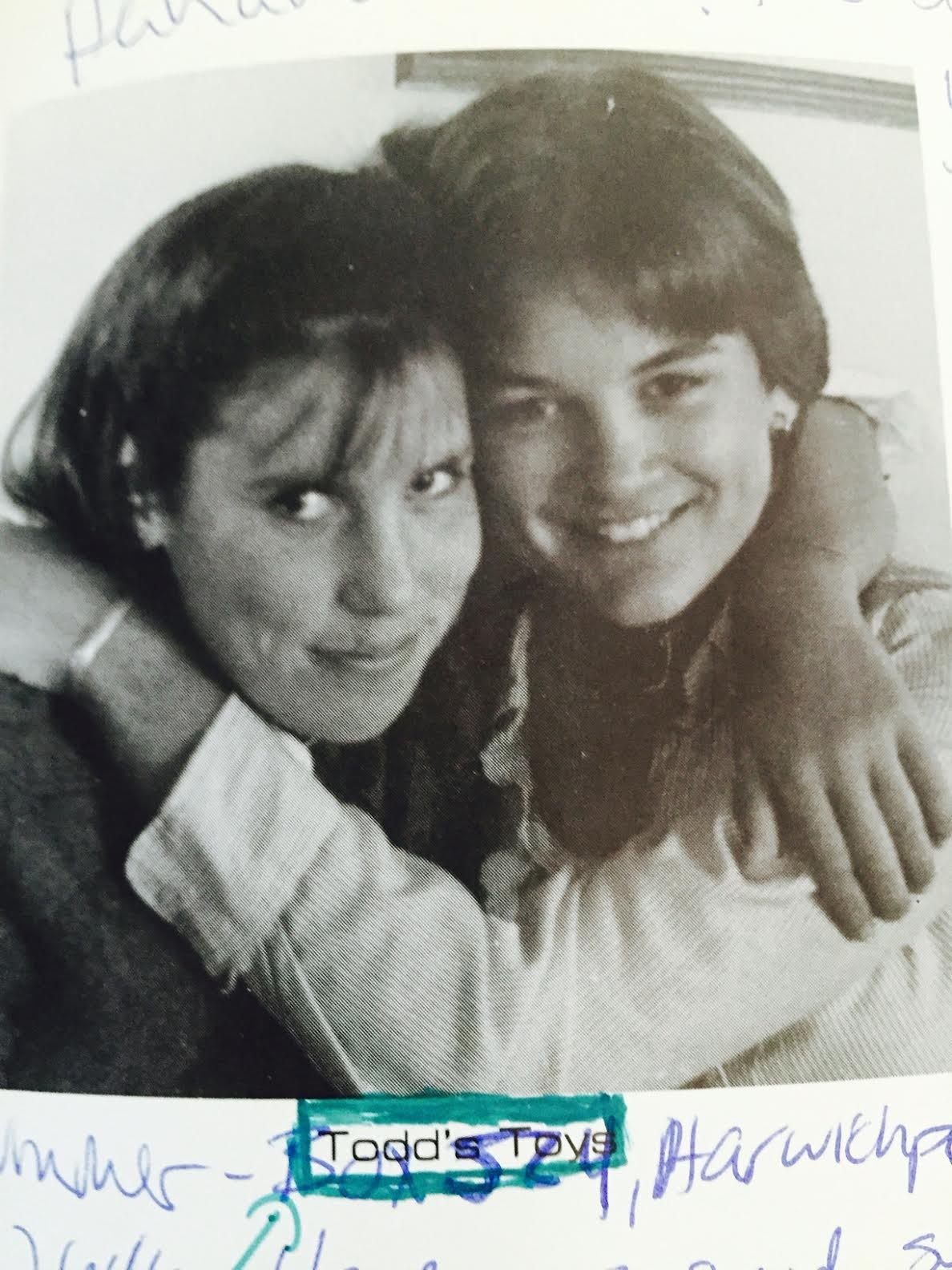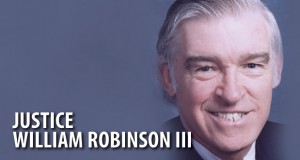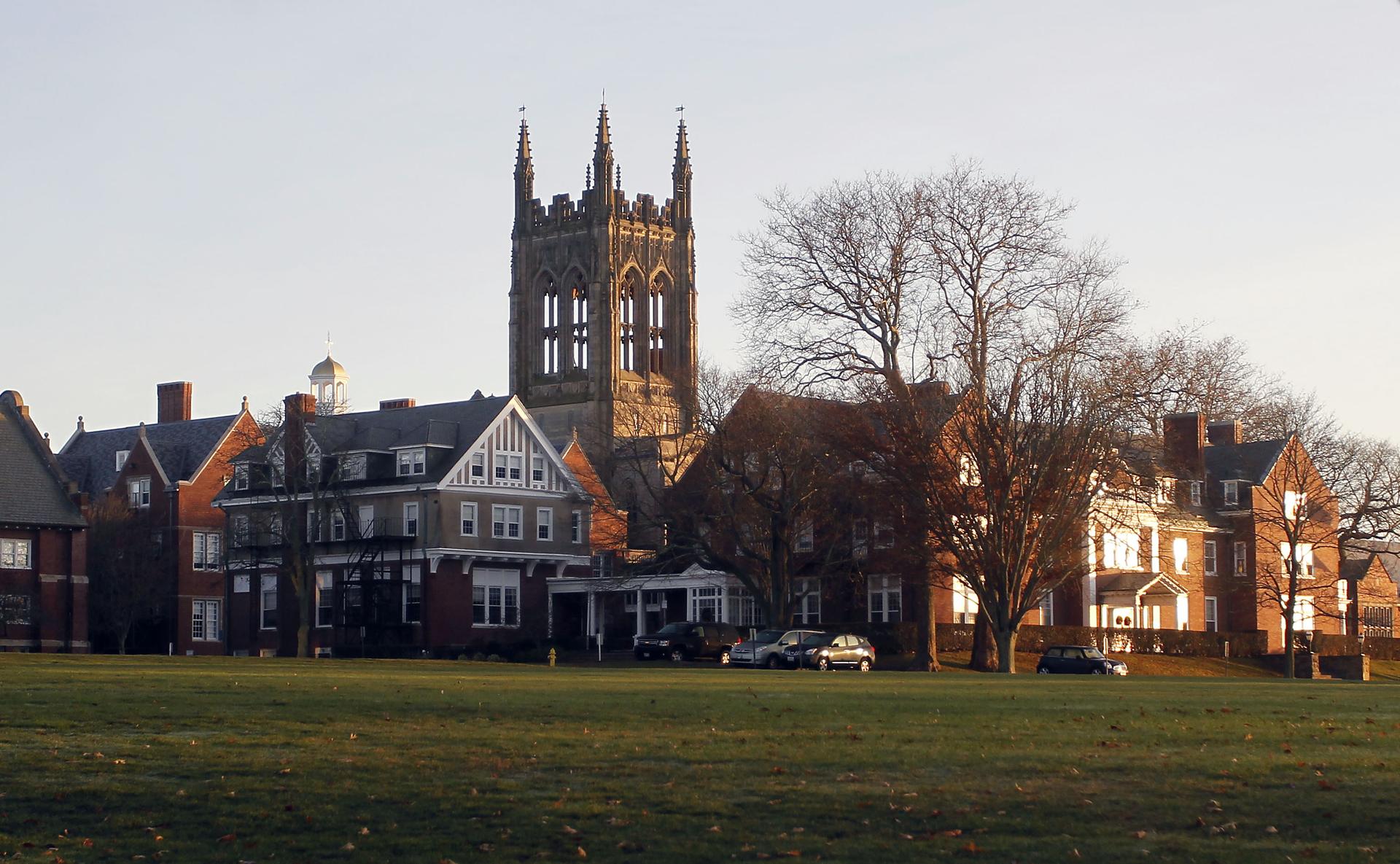Time Magazine just published a post: Colby Student: Billy Bush Exemplifies the Hypermasculinity on College Campuses with the tagline “A student from Bush’s alma mater says not much has changed.” Here’s my story. Billy Bush and I went to the same boarding school, St. George’s in Newport, Rhode Island. You may have read about the school recently in The New York Times or The Boston Globe or Vanity Fair because an investigation recently concluded that scores of students were raped and assaulted at the school, mostly during the 70s and 80s. While I was lucky enough not to be a victim of assault, this “elite” institution that supposedly educates “the best and the brightest,” like so many boarding schools was a bastion of sexism and racism, an old boys club where a culture of silence was encouraged and rewarded. The photo below is of me (on the left) and my friend, freshman year, in our high school yearbook from 1984. The caption reads “Todd’s toys.”
Todd was a senior prefect. The saddest thing to me about this photo is that I, at 14 years old, aspired to be liked, desired, by older boys, that I believed my value and worth was determined by whether or not older males– the guys with the power– were attracted to me. St. George’s did nothing that I can recall to recognize this sexism or to empower female students. To the contrary, the school seemed to condone misogyny. There was an annual event at St. George’s called Casino Night where all the new girls, mostly freshman and sophomores, dressed up as bunnies, as in playboy-type bunnies, complete with fishnet stockings and cotton tails on our butts. Our job was to sell the boys– who were fully clothed and pretended to gamble– candy and fake cigarettes. Casino Night was not a secret event, it took place to much fanfare in the school dining hall. Every teacher and administrator knew about it.
When I heard the Billy Bush/ Donald Trump tape I wanted to scream because it was like everything I learned in high school, the objectification of women and girls, the metamorphosis of teenager from San Francisco into a “toy” bunny plaything, was being reinforced by a would-be president of the United States of America.I felt ill and the nausea hasn’t left me since.
What are girls supposed to think and feel and be when we grow up surrounded by this kind of sexism, when it’s so normal that no one even notices it? When teachers condone it by never addressing it?
After I learned about the sexual assaults and rapes at St. George’s, about a year ago, I started blogging about the story. Though even before I was told about the abuse and the cover ups, I’d written about the sexism I experienced there in blog titled Women, class, and the problem of privilege: Everything I learned about sexism, I learned at boarding school.
I spoke to the investigators because they said they wanted to know about the culture of sexism at the school, how the place could’ve allowed the rapes to happen and go unreported. I was disappointed that the investigators didn’t publish more about the rape culture at the school, and I wrote many blogs about it, including one titled with a quote from a survivor: ‘There’s no sense of why so many assaults happened at St. George’s, what the school did to create cultural backdrop that allowed and encouraged rape.’
The links to the posts I wrote about St. George’s are listed below, though I removed the photos from the blogs. I had posted a photo, also from our 1984 yearbook, of a freshman girl dressed as a bunny on Casino Night. To me, the shame was on the school, not the girl, but when she told me she wanted it down, I respected her wishes. I took all the pictures of students down except for the one with me in it that you can see above.
Misogyny is so ubiquitous in America, paradoxically, it’s invisible. It’s in our schools and colleges and the air we breathe, but we don’t even notice it. I’m not 14 years old anymore. I have three daughters of my own now. I want them to have the right to control their own bodies, to find their value in their achievements not in how they appear to men, to be ambitious, creative, and inspired, to dream big and to acquire the skills to realize their vision, to be valued as people, not toys. That’s why I’m voting for Hillary Clinton for president on November 8.
Reel Girl posts on St. George’s:
St. George’s, how should law enforcement respond to 911 call about possible rape at your school?
Open letter to Bishop Knisely about sexual assaults and cover ups at St. George’s school
Why is a justice who argued against statutory rape laws on the R. I. Supreme Court?
St. George’s school continues to hold back information in sexual assault investigation
St. George’s releases report on sexual assaults at the school
St. George’s alumna creates fund for survivors sexually assaulted at school
Comments on petition asking St. George’s for fair investigation into assaults make me cry
St. George’s School continues to flub investigation into sexual assaults
Lawyer investigating St. George’s sexual assaults is partner of school’s legal counsel
‘There’s no sense of why so many assaults happened at St. George’s, what the school did to create cultural backdrop that allowed and encouraged rape.’
Prep school alumni respond to St. Paul’s rape trial verdict
Women, class, and the problem of privilege: Everything I learned about sexism, I learned at boarding school
Tucker Carlson, Jerry Garcia, and me





